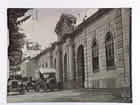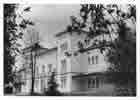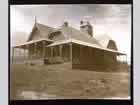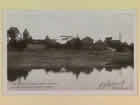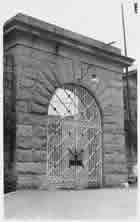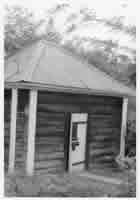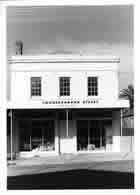Gold created Beechworth, one of the most picturesque towns of north eastern Victoria. From February 1852, when the first important discoveries were made, the town took its shape from the needs of the time. Gold spelled prosperity. It also meant civil unrest, and the need for police and other government activities to maintain order. It is no accident that two of the earliest surviving buildings in the north eastern district are Beechworth Court House, built in 1857, and the Beechworth Gaol which was built between 1858 and 1864. As legal and administrative centre of the north east Beechworth grew, smaller mining areas declined.
Other government buildings were soon added. The Beechworth Powder Magazine was built in 1859-60 for the safe housing of explosives needed for deep-lead and reef mining.
The health needs of the surrounding area were met by Ovens District Hospital built in the 1860s with a separate wing for the Chinese opened in 1883. A Lunatic Asylum, now called the Mayday Hills Hospital, was completed in 1867 and the Benevolent Home opened in 1862. These institutions in turn contributed to the growth of the town by assuring steady employment for the residents, and thus giving a sense of confidence and permanence.
Wangaratta’s prosperity in the 1859s came from the position on the Melbourne-Sydney route as the starting point for the Ovens diggings. At the height of the activity at the Ovens, Wangaratta had ten new hotels and a brewery; and storekeepers and tradesmen as well as farmers flourished as a result. The Wangaratta Railway Station, built in 1874, maintained the city’s importance as a transport centre.
Changes in the methods of mining left their mark on the region. When surface alluvial mining gave way to reef mining, some permanent settlements grew from temporary mining camps, as at Bright and Wandiligong. Wandiligong Primary School had enrolment of 200 children in the 1870s. The Bright Lock-up, of rough log-cabin construction, is one survivor of many such structures in the 1850s goldfields, where prisoners were kept until they could be moved on to larger centres.
Mining in the north east demonstrated the firm belief that the future of gold mining lay in improved technology. The control of water in mining tested miners’ ingenuity. Yackandandah, first mined in 1852, was in the 1890s the site of the first use of dredging and hydraulic sluicing, technologies which spread to other parts of Victoria. The demand for mining equipment in the north east contributed to the success of the foundries in Bendigo and Castlemaine.
The S G Dean Grocery and Hardware Store in the main street of Yackandandah is a reminder of the role for the provision of food and stores to the mining community. Gold mining sustained Rutherglen and Wahgunyah for less than 60 years, but local vineyards, first planted in 1859, proved an enduring legacy. When ex-miners moved on to the land in the 1860s, many in the area turned to wine-growing. The Mount Ophir Winery and the All Saints Winery, Wahgunyah reminds us of a period in which gold in various ways contributed to the pattern of development in rural Victoria.
This text is reproduced from the publication, 'A Golden Heritage: Victoria 150' (2001) with the kind permission of Heritage Victoria

